Red Square in Moscow | Moscow travel information
Red Square is the main square of Moscow and the most visited place in the capital of Russia. The most famous Moscow sights, such as the Moscow Kremlin and St. Basil’s Cathedral are located near Red Square. The square is located in the city centre, along of the Kremlin eastern wall. Currently, it is a pedestrian area. Red Square of Moscow is included in the UNESCO World Heritage Sites list.
The total length of the Red Square is 330 meters, width — 70 meters, the area about 23,1 m². You will find a lot of information about Red Square and other places on this page.
The nearest metro stations: “Ploschad Revolutsii”, “Okhotny Ryad”, “Teatralnaya”, “Kitay-gorod” and “Biblioteka imeni Lenina”.
The territory which is occupied by the square nowadays was originally built up with various buildings. Located here buildings were destroyed by a fire at the end of the 15th century. Buildings construction was not made in subsequent years on this area. Territory had been used for market for several centuries. Located next to the eastern wall of the Kremlin territory was called “Fire place”, later “Torg” (trading place). The place became known as the “Red Square” (Красная Площадь) in the 17th century. (“Krasnaya ploschad” words have meanings not only “Red square”, but also “Beautiful square”.)
Territory had been used for market for several centuries. Located next to the eastern wall of the Kremlin territory was called “Fire place”, later “Torg” (trading place). The place became known as the “Red Square” (Красная Площадь) in the 17th century. (“Krasnaya ploschad” words have meanings not only “Red square”, but also “Beautiful square”.)
Buildings construction had been carried out on the surrounding square territory for many years. Some buildings had been built along the perimeter of the square and survived to this day: St. Basil’s Cathedral (1555 — 1561), the Kazan Cathedral (17th century), shopping arcade, a monument to Minin and Pozharsky, the Historical Museum, the Mausoleum of Lenin. Square is paved with cobblestones.
Public events is often held on Red Square.
A military parade is held on the square every year at May 9th.
“Kremlin stars» military orchestras’ festival is held on the “Red Square” at the end of the summer.
Big ice rink is built on the Red Square every winter in the last years.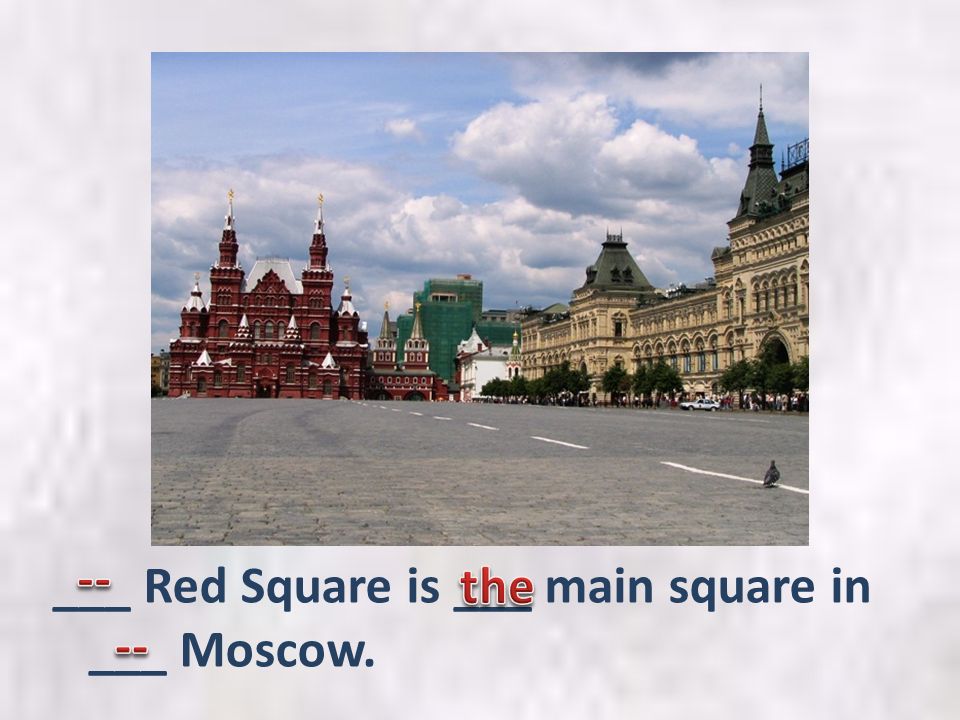
Visit Moscow | Attractions | Museums | Metro | Airport
Moscow “Red Square” is located between the “Moscow Kremlin” (to the west) and “Kitay-Gorod” area (in the east).
There are several well-known sites located on the square: “Lobnoye mesto” (also known as the Place of Skulls), “Minin and Pozharsky” monument, the Lenin Mausoleum, Kremlin Wall Necropolis, GUM (State Department Store), the History Museum, Kazan Cathedral, St. Basil’s Cathedral (Pokrovsky Cathedral).
Manezhnaya Square is located northwest of Red Square (behind the building of the Historical Museum).
“Vasilyevsky Spusk” square (Vasilevsky descent) is located between “Red Square” and banks of the “Moscow river” (behind St. Basil’s Cathedral). Zaryadye Park, which has become popular recently, is located there too.
Nikolskaya street is laid from the Kazan Cathedral in the north-east to Lubyanka Square. This pedestrian street is also very popular with tourists.
The Moscow Kremlin
The Moscow Kremlin (Московский Кремль) is the most famous attraction in Moscow. One of the Kremlin walls is located along the western border of the square. Spasskaya Tower of the Kremlin is situated in the middle of the wall. The Kremlin is the oldest part of the Moscow, surrounded by a fortress wall. The Moscow Kremlin is the center of the state and the center of power in Russia for many years. Most of tourists come to Red Square and visit the Moscow Kremlin while being in Moscow. There is residence of the President of the Russian Federation located in the Kremlin.
One of the Kremlin walls is located along the western border of the square. Spasskaya Tower of the Kremlin is situated in the middle of the wall. The Kremlin is the oldest part of the Moscow, surrounded by a fortress wall. The Moscow Kremlin is the center of the state and the center of power in Russia for many years. Most of tourists come to Red Square and visit the Moscow Kremlin while being in Moscow. There is residence of the President of the Russian Federation located in the Kremlin.
You can visit The Moscow Kremlin page for more information.
St. Basil’s Cathedral
St. Basil’s Cathedral is one of the most beautiful churches of Russia. The cathedral was built in the years 1555 — 1561 on the orders of Ivan the Terrible to commemorate the capture of Kazan and the victory over the Kazan Khanate. It is an active church and a monument of architecture. The temple is located on the southern boundary of the Red Square. St. Basil’s Cathedral is included in the list of UNESCO World Heritage Sites in Russia.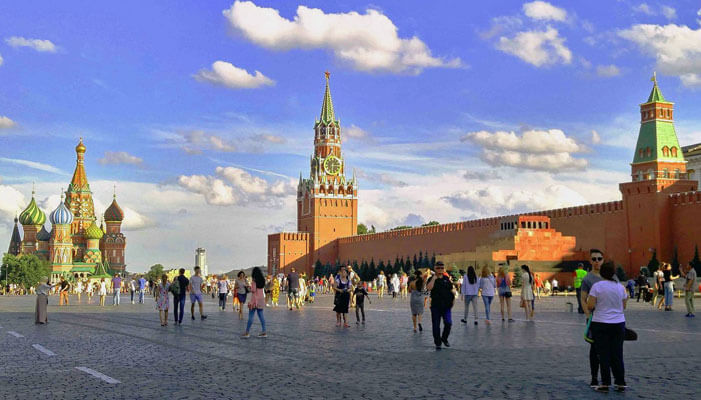 There is Minin and Pozharsky monument located next to the cathedral.
There is Minin and Pozharsky monument located next to the cathedral.
For more information, please visit about cathedral page.
History Museum
The State History Museum is located on the northern edge of Red Square. The museum was founded by decree of Emperor Alexander II, 21 February 1872. The museum building was built in 1875 — 1881 years. It keeps artifacts, which reflect the history and culture of Russia. The museum has an area 4 000 square meters. The museum collection includes about 22 thousand items. There are some branches of the museum: Pokrovsky Cathedral (St. Basil), Novodevichy monastery, Lenin Museum, the Museum of the Patriotic War of 1812.
For more information, please visit Moscow museums page.
GUM
GUM (State Department Store) is located on the eastern border of the Red Square. It is one of the oldest department stores in Russia. This place has been used for trade since founding of Moscow. Upper Trading Rows new building was constructed in the 19th century here. Construction was completed in 1893. Currently, it is a private company, but the name “GUM” (State Department Store) remained.
Construction was completed in 1893. Currently, it is a private company, but the name “GUM” (State Department Store) remained.
Get more information about GUM.
Nikolskaya Street (Никольская улица) connects Red Square and Lubyanka Square. The north side of the street is lined with historic buildings, such as the Kazan Cathedral, the Old Mint, Monastery of the Holy Saviour. It is a pedestrian street and part of luxury shopping district.
See also:
- Moscow attractions: location on the map.
- Metro stations: location on the Moscow metro map.
- The most famous sights of Moscow.
Most tourists get to the Red Square by metro. The nearest stations are located about 300 – 400 meters away (“Ploschad Revolutsii”, “Okhotny Ryad”, “Teatralnaya”). You can also take a taxi.
It may be interesting for you: Hotels near Red Square in Moscow.
Tickets to the Kremlin can be bought online. Look for tickets and guided tours here.
The route planner will help you to make a route across Moscow. (Find out how to get to the place you need.)
There are several cafes in the department store GUM. Among the most popular are cafes «Festivalnoye» and «Canteen №57» (on the 3rd floor).
Language English
Main content:
Red Square, Moscow
What is the history of Red Square?
- The territory on which Red Square currently lies has been occupied since the 11th century. In the 1400s it developed into an established market place alongside the Kremlin.
- The square soon flourished as the centre of political and economic life in Moscow. Over the next few centuries shopping arcades, government buildings and churches were constructed there.
- Red Square became the ideological and political centre of the Soviet Union, home to glorious military parades and the mausoleum of Vladimir Lenin, father of the October Revolution.

For centuries Red Square has been the nucleus of life in Moscow. It has evolved from being a simple medieval market, to the setting of glorious Soviet military parades, to the symbolic centre of Russia today. Situated between the Kremlin and historic Kitai-Gorod district and surrounded by the city’s most famous landmarks, it’s impossible to appreciate Moscow without a visit to Red Square.
Red Square during Imperial Russia
Photo by Аполлинарий Михайлович Васнецов on Wikipedia
Although Red Square calls to mind images of Soviet Russia and Lenin, its history stretches back for nearly a millennium. Its territory is ideally located on a hill at the confluence of the Moskva and Neglinnaya Rivers and was used since the 11th century for farming and trade. By the late 1400s this had developed into an established marketplace alongside the Moscow Kremlin.
Did you know? Red Square was initially known by other names: Torg, meaning ‘market’, Pozhar, meaning ‘fire’, and Troitsky, meaning ‘Trinity’.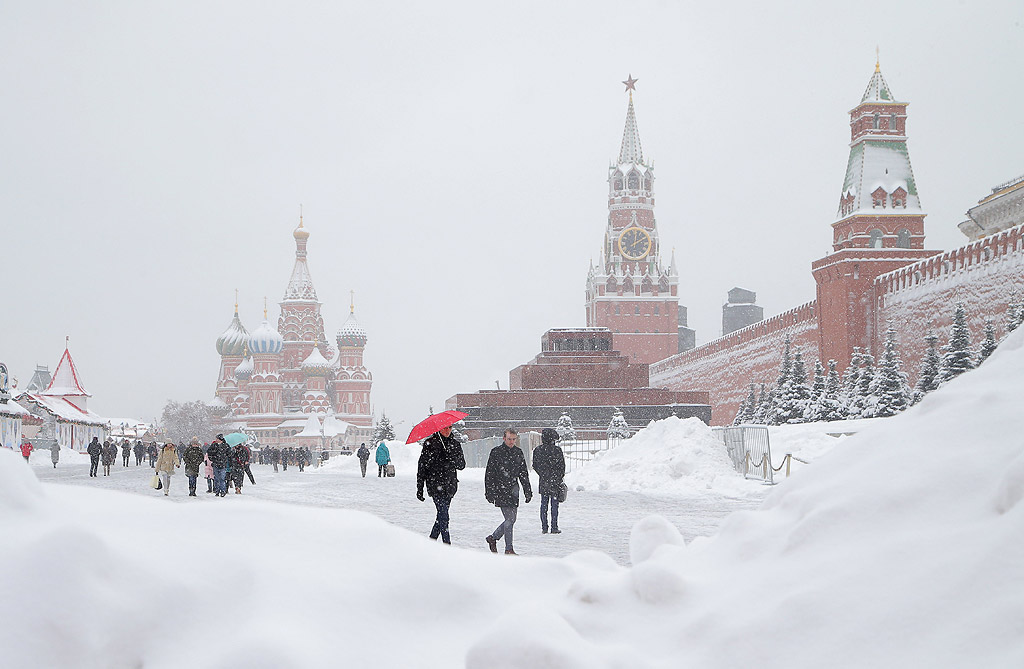 A common misconception is that the square takes its current name from the red Kremlin walls or as a connection with Communism. In fact, krasnyi (red) derives from the Russian word krasivyi, meaning ‘beautiful’. The square did not take this name until the mid-1600s.
A common misconception is that the square takes its current name from the red Kremlin walls or as a connection with Communism. In fact, krasnyi (red) derives from the Russian word krasivyi, meaning ‘beautiful’. The square did not take this name until the mid-1600s.
In the 16th and 17th centuries, Red Square was the centre of political, civil and economic life in Moscow. It was a melting pot of activity. To one side lay the bustling Kitai-Gorod where Moscow’s inhabitants lived, to the other the Kremlin with its cathedrals and palaces, and in the centre a bazaar bustling with people day and night. On Red Square, people could also listen to the Tsar’s addresses and get involved in political activity.
The construction of St Basil’s Cathedral embodied this mix, an Orthodox institution with a colourful medley of architecture contrasting the Kremlin’s restrained white-stone churches. After continual fires devastated Red Square, the market was rebuilt in the late 1600s with stone shops creating a real shopping arcade with all kinds of products and services, from stalls peddling local delicacies to taverns, passenger cabs and blacksmiths.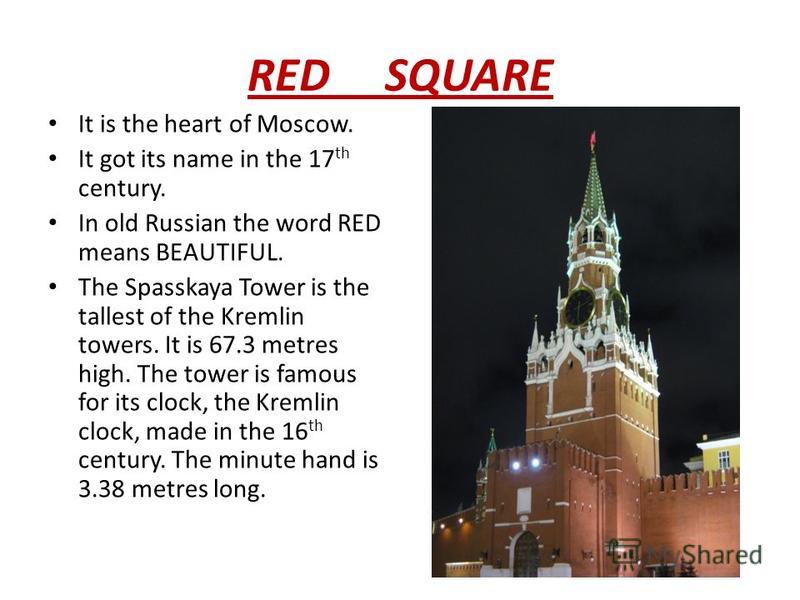
Did you know? By the mid 17th century nearly 700 shops operated on Red Square!
After St Petersburg was made the capital of the Russian Empire, Red Square fell into disrepair. This was compounded by the damage caused by Napoleon’s army invading Moscow in 1812. But in the late 1800s the square resumed its former importance, with the construction of a State History Museum, a brand-new shopping centre, and tram lines. At this point, Red Square began to assume its present shape.
Did you know? Red Square is 330 metres long and 75 metres wide, approximately the size of three football fields. Despite its fame, it is certainly not the biggest square in Russia, or even in Moscow!
Red Square during Soviet Russia
Photo by http://www.thg.ru/education/dva_grada/dva_grada-01.html on Wikipedia
The October Revolution heralded a new era for Red Square. It became the ideological and political centre of the new Soviet state, whose government relocated to the adjoining Moscow Kremlin. Lenin rallied the Muscovites from the square to join his cause, soldiers who died in revolutionary battles were buried in a necropolis along its western wall, and military and sporting parades took place there.
Lenin rallied the Muscovites from the square to join his cause, soldiers who died in revolutionary battles were buried in a necropolis along its western wall, and military and sporting parades took place there.
Did you know? The Soviets planned to destroy many important buildings on Red Square, including St Basil’s Cathedral, to accommodate military parades and an enormous skyscraper housing the People’s Commissariat of Industry.
One military parade, held on the 7th November 1941, carried particular significance. Soldiers taking part proceeded directly from Red Square to the war front. In order to protect the square from German reconnaissance and bombing, it was disguised with ‘streets’ of wooden structures, and important buildings such as St Basil’s and the Mausoleum were masked with fabric and paint. A glorious victory parade was held on Red Square on 24th June 1945 to celebrate the end of the war in Russia.
Did you know? The first American film for which the Soviet authorities permitted filming on Red Square was Red Heat, starring Arnold Schwarzenegger as a Soviet policeman.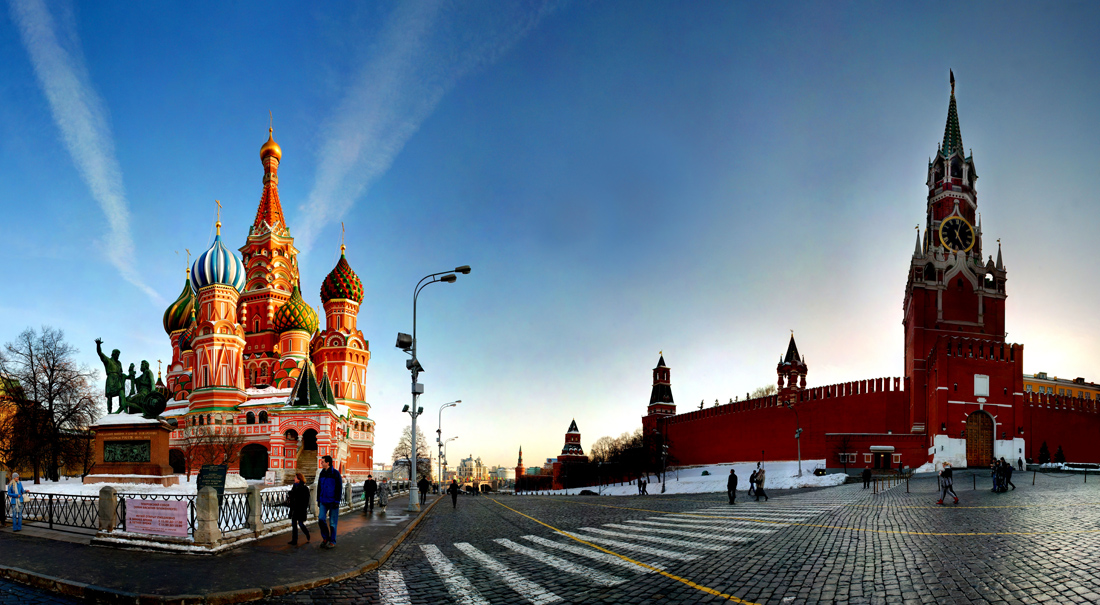
Red Square was finally reopened for general access in 1963, and was designated a UNESCO World Heritage Site in 1990. Since the collapse of the Soviet Union, Red Square has hosted many famous concerts and every year celebrations and parades continue to take place there.
What can you see at Red Square today?
- St Basil’s Cathedral: Russia’s most famous cathedral, comprising ten separate churches with elaborate colourful domes, its architecture unparalleled throughout the whole of Russia
- Moscow Kremlin: The seat of Russian power from the medieval times to the present day. The complex is home to several palaces, churches, towers and squares
- State Historical Museum: The largest national history museum in the country, with exhibitions spanning from the Stone Age to the end of the 19th century
- GUM Department Store: Moscow’s most famous department store, established in pre-revolutionary times.
 Many luxury stores are housed in this architectural masterpiece
Many luxury stores are housed in this architectural masterpiece - Mausoleum of Vladimir Lenin: A solemn granite structure where the father of the revolution lies to this day. Stands in the centre of the Red Square Necropolis
St Basil’s Cathedral
Photo by Artem Beliaikin on Unsplash
Russia’s most recognisable cathedral, famous for its colourful onion domes. St Basil’s Cathedral was commissioned in the mid-1550s by Ivan the Terrible, who subsequently had its architect blinded so that such a wondrous sight could never be recreated. The cathedral is dedicated to Saint Basil the Blessed, a holy fool who lived in the 1500s, and is also known as Pokrovsky Cathedral.
Moscow Kremlin
Photo by Vitolda Klein on Unsplash
The Kremlin has been a unique monument of Russian culture and a symbol of Russian statehood from medieval Russia until the present day, where it houses the ceremonial residence of the President of Russia. Visitors to the Kremlin can see many cathedrals and churches, visit the 20 towers protecting the Kremlin’s walls, and book a private tour to explore its palaces.
Visitors to the Kremlin can see many cathedrals and churches, visit the 20 towers protecting the Kremlin’s walls, and book a private tour to explore its palaces.
State Historical Museum
Phtoto by Skif-Kerch on Wikipedia
Russia’s largest national history museum, with exhibits from the Stone Age to the 19th century. There is no better place to gain a comprehensive understanding of Russia’s political, religious, and cultural history, and to discover how Russia evolved from a land of disparate tribes into the superpower that it is today. The museum is housed in an imposing dark red building on Red Square’s north-west side.
Mausoleum of Vladimir Lenin and Red Square Necropolis
Photo by DIMSFIKAS on Wikipedia
On the western side of Red Square, next to the Kremlin wall, is the Mausoleum of Vladimir Lenin. Inside the solemn red, grey and black structure is a transparent sarcophagus in which lies Lenin’s embalmed body. Apopular tourist attraction on Red Square, it’s necessary to plan your visit carefully as the mausoleum is only open four days a week from 10:00 – 13:00.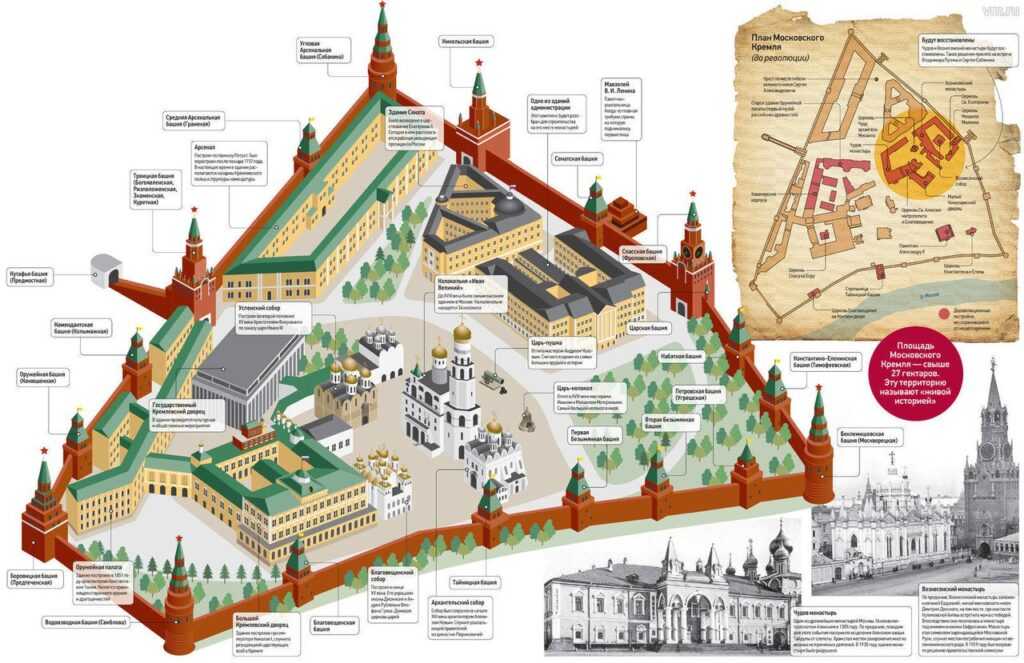 The mausoleum stands in the centre of the Red Square Necropolis, a tiered memorial cemetery where many important Soviet figures, revolutionary soldiers, and foreign Communists are commemorated.
The mausoleum stands in the centre of the Red Square Necropolis, a tiered memorial cemetery where many important Soviet figures, revolutionary soldiers, and foreign Communists are commemorated.
Did you know? Stalin’s body also lay in the mausoleum from 1953 – 1961, until it was removed as part of the process of Destalinization.
GUM Department Store
Photo by Asif Masimov on Wikipedia
Moscow’s most famous and beautiful department store, which evolved out of the trading rows established on Red Square in previous centuries. The architect responsible for the department store, Alexander Pomerantsev, won a competition with his fabulous design. It is worth exploring GUM even if you don’t want to buy anything, but just to take in the opulent setting.
Lobnoe Mesto
Photo on Wikipedia
This large stone platform is the most ancient remaining place of Red Square. From here, the tsars gave speeches, presented decrees, announced executions and wars, and led solemn ceremonies. At other times the nobility would be brought here and prosecuted in a ‘civil execution’- not a bloodthirsty affair, but a humiliating ceremony in whichd is graced nobles were stripped of their rank and title. Nevertheless, this spot has seen its fair share of bloodshed. Bodies of enemies of the state were displayed here, and very occasionally executions were carried out on the platform.
At other times the nobility would be brought here and prosecuted in a ‘civil execution’- not a bloodthirsty affair, but a humiliating ceremony in whichd is graced nobles were stripped of their rank and title. Nevertheless, this spot has seen its fair share of bloodshed. Bodies of enemies of the state were displayed here, and very occasionally executions were carried out on the platform.
Monument to Minin and Pozharsky
Photo by Uwe Brodrecht on Wikipedia
Kuzma Minin and Prince Dmitry Pozharsky defended Russiain the Battle of Moscow against the Polish invaders in 1612. They are honoured in this monument which stands pride of place in front of St Basil’s Cathedral. It depicts Minin rallying Pozharsky and Nizhny Novgorod’s inhabitants to defend their capital. The Day of National Unity, dedicated to the two men, takes place on 4th November each year and people come to lay flowers at the monument.
Kazan Cathedral
Photo on Wikipedia
The cathedral was commissioned by Prince Pozharsky in honour of the 1612 Battle of Moscow. It was unfortunately destroyed by the Soviets in 1936 as part of the large-scale clearing of Red Square. Luckily, architect Peter Baranovsky took meticulous measurements and photographs of the cathedral prior to its destruction, allowing for reconstruction which began in 1990. The cathedral stands today in Russian architectural style faithful to its original design, with a tiered pyramid of kokoshniks (semi-circular decorative elements) leading to a central gilded dome.
It was unfortunately destroyed by the Soviets in 1936 as part of the large-scale clearing of Red Square. Luckily, architect Peter Baranovsky took meticulous measurements and photographs of the cathedral prior to its destruction, allowing for reconstruction which began in 1990. The cathedral stands today in Russian architectural style faithful to its original design, with a tiered pyramid of kokoshniks (semi-circular decorative elements) leading to a central gilded dome.
Voskresensky Gates
Photo by Skif-Kerch on Wikipedia
These gates were built in the medieval period and were a very important part of Red Square’s ensemble. Upon entering Moscow, Russian tsars proceeded through them and prayed to the revered Iverskoy Icon, housed there today in a gold and turquoise chapel adjoining the gates.
Did you know? At the Voskresensky Gates stands the Nulevoy kilometr (Kilometre Zero), a circular plaque on the ground marking the point from which all road distances in Russia are measured. To make a wish, stand on one leg on the plaque, look at the Iverskoy Chapel, and throw money over your left shoulder so that it lands within the border of the plaque!
To make a wish, stand on one leg on the plaque, look at the Iverskoy Chapel, and throw money over your left shoulder so that it lands within the border of the plaque!
Celebrations and festivities
As Moscow’s most important square, many festivals, parades and celebrations are hosted on Red Square throughout the year. Some of the most famous include the Christmas Market and ice rink, New Year’s celebrations, Victory Day Parade (9th May), Russia Day (12th June),the Spasskaya TowerMilitary Music Festival (August/September), and the Historical Parade (7th November). Here you may learn more about Russian public holidays and celebrations.
To see the best of what Red Square and its surroundings have to offer, why not take one of Express to Russia’s private guided tours?
Photo by Tengyart on Unsplash
What’s nearby?
- Nikolskaya Ulitsa: Considered to be one of Moscow’s most elegant streets, lined with beautiful buildings and strung with picturesque hanging lights.
 Links Red Squareand Lubyanka Square.
Links Red Squareand Lubyanka Square. - Alexander Garden: One of Moscow’s first public parks, running for nearly a kilometre alongside the Kremlin. Its manicured gardens and peaceful ponds are perfect for a quick stroll before visiting Red Square.
- Park Zaradye: This huge park provides an oasis of green in busy Moscow. It is divided into four zones reflecting the diversity of Russia’s landscape – forest, steppe, tundra and floodplains – and has a viewing platform for a magnificent vista of the river and Kremlin.
Essential Information for Visitors
Address and Contact Details
Red Square, Moscow, 109012
https://www.kreml.ru/
Metro: Borovitskaya/Biblioteka Imeni Lenina/Alexandrovsky Sad,
Teatralnaya/Ploshchad Revolutsii/Oxotny Ryad
Opening Hours
Red Square is open 24 hours a day.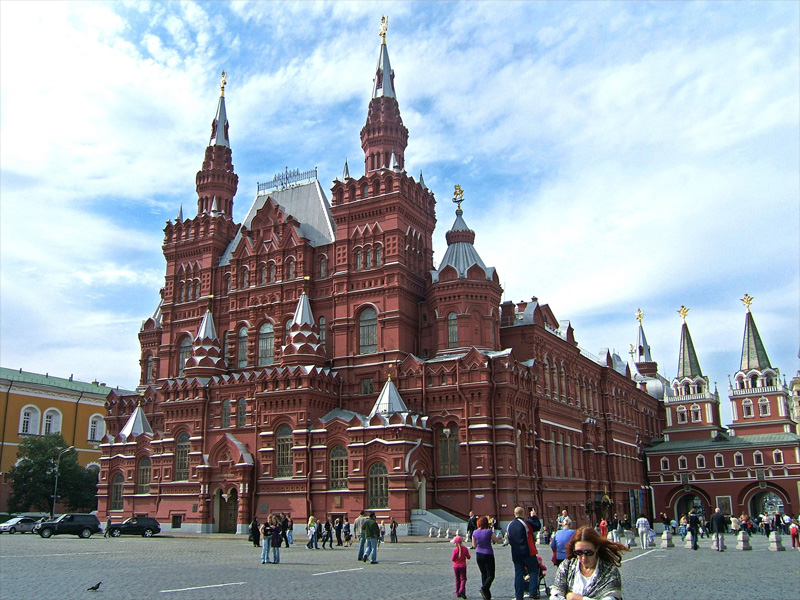
Access is restricted on certain days for events, so make sure to check beforehand.
Visit the websites of Red Square’s surrounding landmarks to find their opening hours.
Краткие факты о Красной площади
Московская Красная площадь (Красная площадь) известна своим политическим символизмом, но на самом деле была названа за свою красоту: Красная, или «красная», означала «красивая» на древнерусском языке.
Площадь собирала толпы, так как это был трущобный городок 1400-х годов. Россияне знают площадь как парадный двор правителей от Ивана Грозного до Владимира Путина. Жители Запада склонны вспоминать сбивающие с толку армии времен холодной войны. Наряду с великими архитектурными жемчужинами Москвы, включая зубчатые стены Кремля и луковичные купола собора Василия Блаженного, Красная площадь остается бьющимся сердцем России.
Вот еще несколько интересных фактов об архитектурной иконе:
Геометрия: Красная площадь на самом деле представляет собой прямоугольник площадью 800 000 квадратных футов.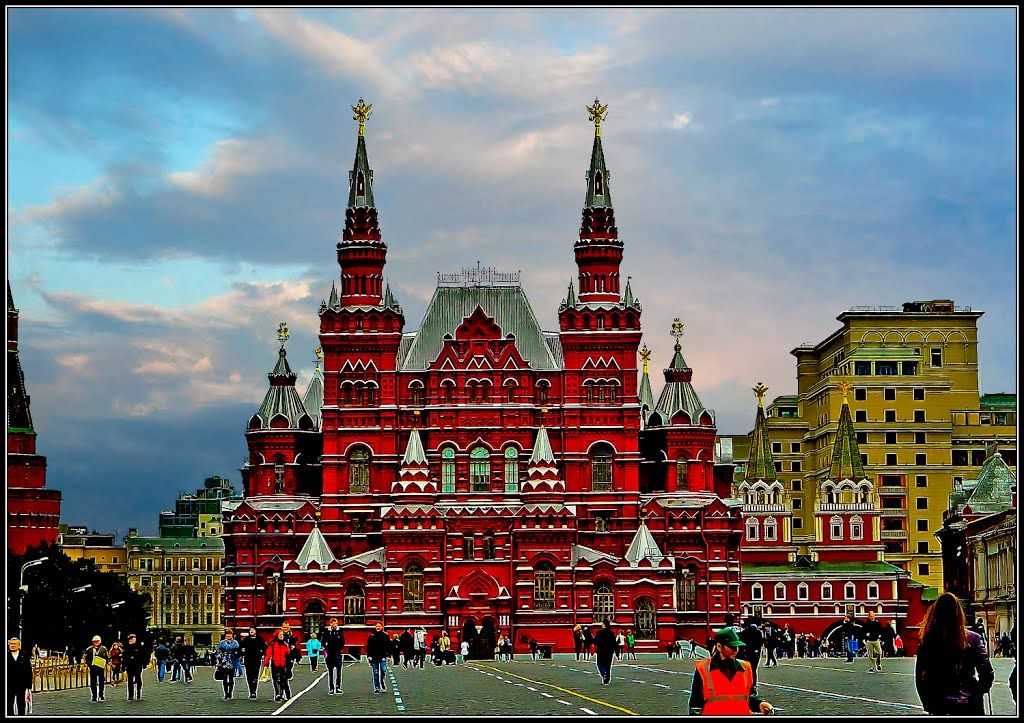
Случайный турист: В 1987 году Матиас Руст вторгся в советское воздушное пространство, пытаясь посадить свою Cessna на площади, используя для навигации только карту улиц. Он приземлился на соседний мост, чтобы не задеть собравшихся у достопримечательности туристов.
Умышленный террорист: В декабре 2003 г. террористка-смертница (вдова чеченского боевика) взорвала себя у входа на площадь, убив пять человек.
Архитектурный передел: Двум шедеврам площади всего 20 лет. Казанский собор, взорванный Иосифом Сталиным в 1936 году, после распада Советского государства был восстановлен по старым чертежам. Воскресенские ворота, снятые в 1931 году для прохода танков, были восстановлены в 1994 году.
Покойся с миром: Тело Владимира Ленина, первого диктатора Советского Союза, умершего в 1924 году, с 1930 года выставлено в граните могила, примыкающая к площади. Его мумию еженедельно обрабатывают отбеливателем, чтобы предотвратить обесцвечивание и плесень.
I Шпион: Кирпичная Царская башня, возвышающаяся на кремлевских стенах, может выглядеть как вершина сказочного замка, но имеет зловещее происхождение. Пять веков назад Иван Грозный шпионил за своими подданными с терема (бывшая деревянная башенка).
Red Tag Распродажа: Викторианский Государственный Универсальный Магазин (ГУМ) на площади, открытый в 1893 году, насчитывает более 1000 магазинов. Сегодня это магазин предметов роскоши.
Назад в СССР: Многие советские лидеры похоронены на Кремлевском кладбище. Меньшие смертные, разделяющие это место упокоения, включают Джона Рида (1887-1919 гг.)20), американского журналиста, задокументировавшего рождение Советского Союза и погибшего там, и 238 солдат-большевиков, похороненных в братской могиле.
Статуя исковой давности: Несмотря на то, что площадь является символическим центром страны, здесь установлена только одна статуя. На нем изображены Кузьма Минин и князь Дмитрий Пожарский, два патриота, разгромившие вторгшихся поляков в 1612 году.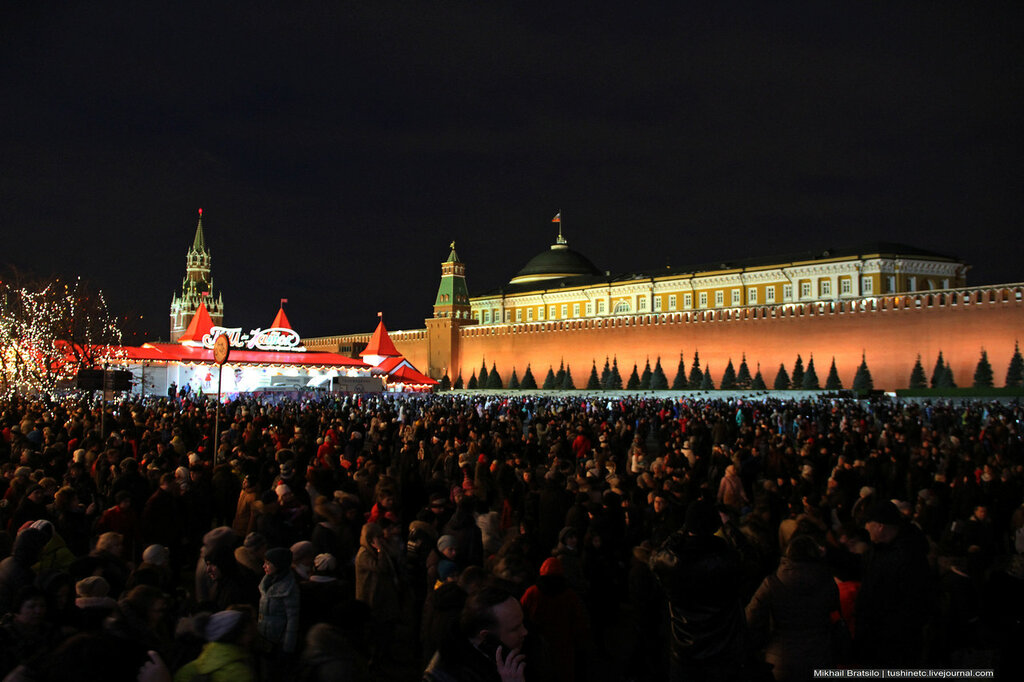 0003 магазин . Многого нет в сети: подпишитесь сегодня, чтобы получить печатную версию всего за 1 доллар США в месяц!
0003 магазин . Многого нет в сети: подпишитесь сегодня, чтобы получить печатную версию всего за 1 доллар США в месяц!
Эксклюзивный контент для подписчиков
Почему люди так одержимы Марсом?
Как вирусы формируют наш мир
Эпоха собачьих бегов в США подходит к концу
Узнайте, как люди представляли себе жизнь на Марсе на протяжении всей истории
90592Посмотрите, как новый марсоход НАСА будет исследовать красную планетуПочему люди так одержимы Марсом?
Как вирусы формируют наш мир
Эра собачьих бегов в США подходит к концу будет исследовать красную планету
Почему люди так одержимы Марсом?
Как вирусы формируют наш мир
Эпоха собачьих бегов в США подходит к концу
Узнайте, как люди представляли себе жизнь на Марсе на протяжении всей истории исследую красную планету
Подробнее
Краткий путеводитель по Красной площади в Москве
28 января 2022
Я люблю нашу столицу и до сих пор восхищаюсь Красной площадью каждый раз, когда ступаю на нее.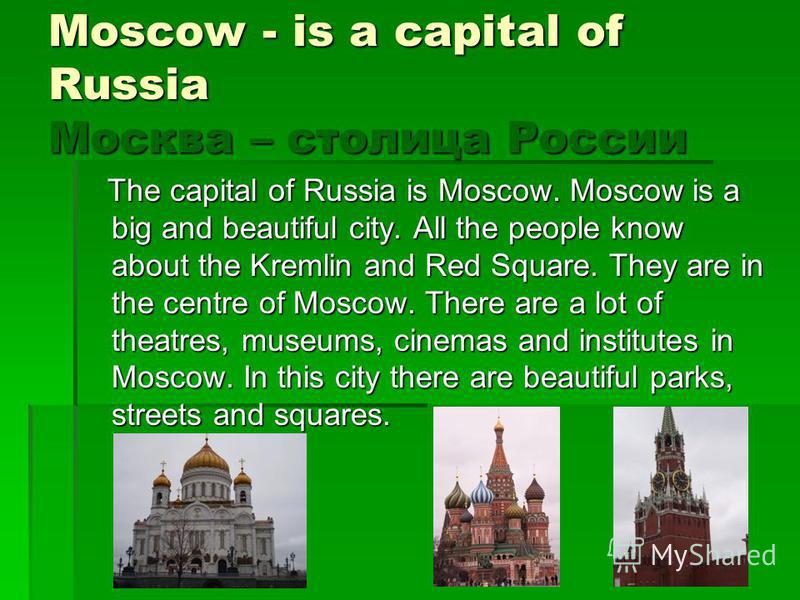 Когда я увидел его впервые, я был просто очарован и завидую вам, если вы его еще не видели. Вам предстоит так много открыть для себя!
Когда я увидел его впервые, я был просто очарован и завидую вам, если вы его еще не видели. Вам предстоит так много открыть для себя!
Прочтите наш краткий путеводитель о главных достопримечательностях главной площади нашей страны и подлинных фактах, стоящих за ними. Обещаю не кормить вас одними легендами!
Почему красный и что такое красный?
На Красной площади России находится Красная площадь. Красная — слово, обозначающее красный цвет в женском роде (потому что в русском языке квадрат женского рода). В старину русские тоже называли все красивое и важное «красным», а нынешнее слово «красивое» в русском языке все еще имеет тот же корень, что и слово «красный». Так что, скорее всего, площадь так и называется за свою красоту и исключительность.
Красивый/красивая/красивое – красивое, красивое в современном русском языке
Красное/красная/красное – красное в современном русском языке, а также красивое в старорусском языке
Красная площадь окружена красным кирпичом Кремля стены и башни с одной стороны, поэтому многие думают, что от них он и получил свое название. Кремлевские стены Москвы в нынешнем виде были перестроены итальянскими зодчими из обожженного красного кирпича в конце 15 -го -го века. Однако между концом 17 -й 90-й 144-й век и 1880-е годы их побелили и белые кремлевские стены вы увидите на старых фотографиях и картинах Москвы.
Кремлевские стены Москвы в нынешнем виде были перестроены итальянскими зодчими из обожженного красного кирпича в конце 15 -го -го века. Однако между концом 17 -й 90-й 144-й век и 1880-е годы их побелили и белые кремлевские стены вы увидите на старых фотографиях и картинах Москвы.
В то же время не все башни Кремля были побелены – Спасская башня, самая большая из всех башен, выходящих на площадь, большую часть времени оставалась из красного кирпича. Это самая известная башня для всех жителей России, ведь каждый Новый год часы на Спасской башне отмечают полночь и под бой курантов мы загадываем желания и пьем шампанское! Нам не нужно в это время находиться на Красной площади, большинство из нас смотрит часы на Спасской башне по телевизору.
Читать о праздновании Нового года в России
Во время Великой Отечественной войны Кремлевские стены, башни и соборы были закамуфлированы, а Красная площадь раскрашена макетами зданий, имитирующих улицы города
Красная площадь во второй половине XVII века А.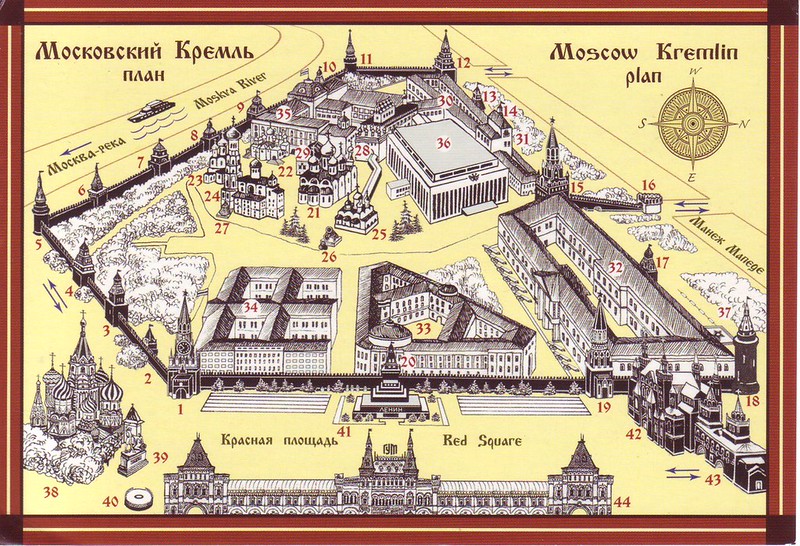
Как и большинство главных площадей других городов, Красная площадь с самого начала была торговой и его окружали со стороны, противоположной Кремлю, Торговые дворы, которые много раз перестраивались и существуют до сих пор.
В 16 -17 веках на Красной площади объявлялись указы русских царей и начинались религиозные обряды. Это было также место для публичных казней.
Что сейчас происходит на Красной площади?
С советских времен Красная площадь активно использовалась для проведения военных парадов и различных массовых мероприятий. Самый главный из них, конечно же, военный парад 9 мая – день, когда мы празднуем победу в Великой Отечественной войне.
На Красной площади круглый год проходит множество фестивалей и концертов, от Рождественской ярмарки до Спасской башни Фестиваль военных оркестров, когда площадь превращается в гигантскую сцену, а вдоль ее сторон строятся трибуны.
У меня сложилось впечатление, что на Красной площади большую часть дней в году проходят мероприятия, поэтому не расстраивайтесь, если вы приедете в Москву и увидите, что вход на нее закрыт – это будет означать, что вам придется вернуться снова!
Воскресенские (Иверские) ворота и часовня
Если эти красивые псевдорусские ворота кажутся вам новыми, вы не ошиблись – нынешние ворота и часовня при въезде на Красную площадь построены в 1994 году на цоколе старых ворот, разрушенных по приказу Сталина в 1931 году.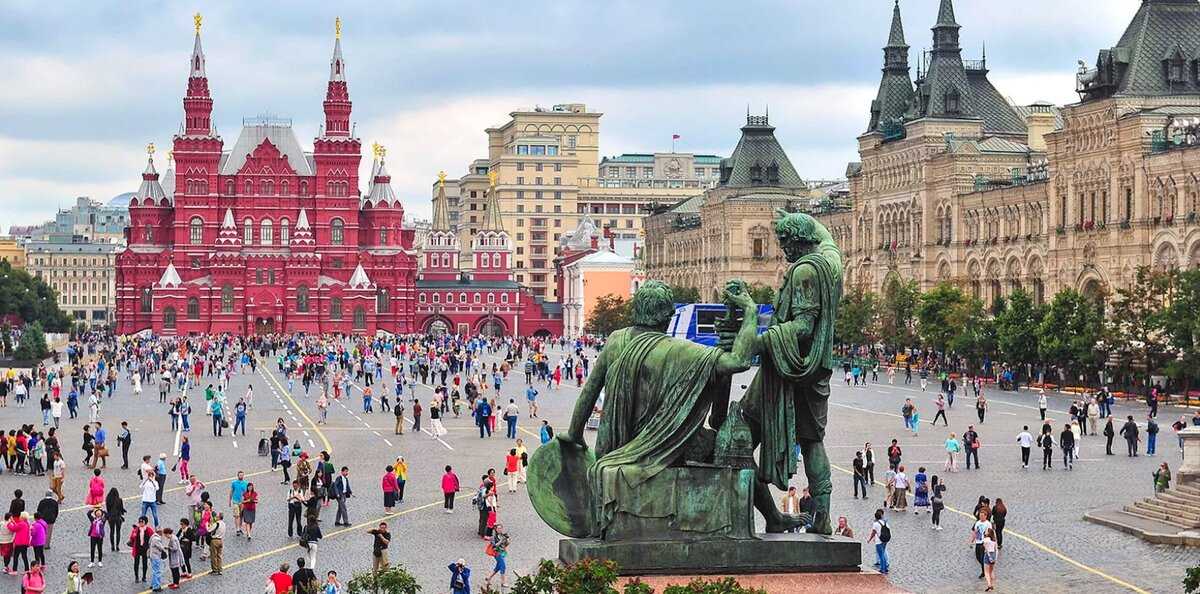 Они препятствовали въезду на площадь военной техники и шеренгам людей во время демонстраций и парадов. Это было одно из многих исторических зданий вокруг Кремля и на его территории, снесенных при Сталине.
Они препятствовали въезду на площадь военной техники и шеренгам людей во время демонстраций и парадов. Это было одно из многих исторических зданий вокруг Кремля и на его территории, снесенных при Сталине.
Старые ворота впервые появились на своем месте в 16 -м -м веке по проекту итальянского архитектора, их запирали на ночь и открывали днем, чтобы люди могли заходить на рынок на Красной площади. Они были снесены в 1680 году и построены заново в большем размере и более богато украшены. В то же время окружавшая их стена была частично разобрана, чтобы уступить место различным административным зданиям, и была построена деревянная надвратная часовня для чудотворной иконы Иверской Божией Матери, заступницы Москвы. Позже, в конце XVIII в., часовня была перестроена в камне архитектором Казаковым и расписана итальянским живописцем Гонзаго после пожара 1812 г.
Триумфальные ворота использовались для празднования побед и церемоний коронации.
Государственный исторический музей
Великолепное теремообразное здание из сказки принадлежит Государственному историческому музею, спроектировано В.
Известный швейцарско-французский архитектор Ле Корбюзье в 1920 году посоветовал советскому правительству «избавиться от этого здания», поскольку оно мешало архитектурному облику Москвы. Хотя Советы с большой легкостью разрушили большое количество зданий в Москве, они не последовали его совету.
Государственный исторический музей, несомненно, изменил исторический облик этого района, ведь в подобном псевдорусском стиле были построены Верхние и Средние торговые ряды и бывшая Московская ратуша.
В музее собрана замечательная коллекция русского прикладного искусства, икон, книг. В нем есть отдельная Комната Достоевского с книгами, письмами и фотографиями известного писателя, подаренными музею его женой Анной.
Рекомендую посетить Музей Отечественной войны 1812 года с Наполеоном, входящий в состав Государственного Исторического музея. Он был открыт в 2012 году в новом двухэтажном павильоне во внутреннем дворе Московской мэрии и имеет оригинальные медали, ордена, вооружение, обмундирование, документы и даже вагоны полевой кухни того времени. Будет интересно не только поклонникам «Войны и мира» Толстого, но и семьям с детьми и всем вам, неравнодушным к русской и европейской истории.
Собор Казанской иконы Божией Матери
По сути, это небольшая церковь, изначально построенная в 17 веке и многократно перестроенная в 19 веке. В 1920-е годы архитектор Барановский начал восстанавливать ей первоначальный вид, но так и не закончил свои работы – церковь снесли в 1936 году. В советское время на ее фундаменте располагались павильон, летнее кафе и фонтан. Затем он был перестроен в 1990-1993 на том же основании.
Затем он был перестроен в 1990-1993 на том же основании.
Свое название получил в память о победе России над польско-литовскими войсками в Смутное время в битве под Москвой 1612 г. на Девичьем Поле (дословно девичьем поле). Во время боя русская армия держала при себе Казанский образ Божией Матери, одну из самых почитаемых православных святынь.
ГУМ
Верхние торговые ряды (ГУМ) и нижние торговые ряды
Торговые ряды вдоль Красной площади стоят с 17 -й век. Первые ряды были деревянными и поэтому постоянно страдали от пожаров, в 18 и 19 веках несколько раз строились и перестраивались в камне. К 1880-м годам застройка рядов в классическом стиле, очень напоминавшая Гостиный двор в Петербурге, сильно обветшала.
Вместо их реставрации правительство решило перестроить ряды в неорусском стиле, чтобы больше соответствовать новому облику Красной площади, где доминирует недавно открывшийся Государственный исторический музей.
В советское время Верхние торговые ряды были преобразованы в Государственный универсальный магазин – ГУМ. Он до сих пор известен под тем же названием, хотя больше не принадлежит государству.
В настоящее время он имеет множество различных магазинов и посещается больше туристами, чем местными жителями.
На верхних этажах расположены две столовые в советском стиле с доступными ценами и платными туалетами. Внутри очень красиво, декор в духе древнерусского стиля, смешанный со стеклянным потолком, характерным для европейских торговых рядов конца XIX века.-й -й век и большую часть времени внутри тихо, поэтому его стоит посетить.
Фото с Progulkipomoskve.ru
У Нижних торговых рядов была иная судьба — после революции они были отданы армии. В 2000-х они ненадолго перешли в собственность Федеральной службы охраны (ФСО) России и сейчас находятся на реконструкции. Совсем скоро они откроются в составе Музеев Кремля
Кстати, директором Музеев Кремля с 2001 года является Елена Гагарина, дочь Юрия Гагарина.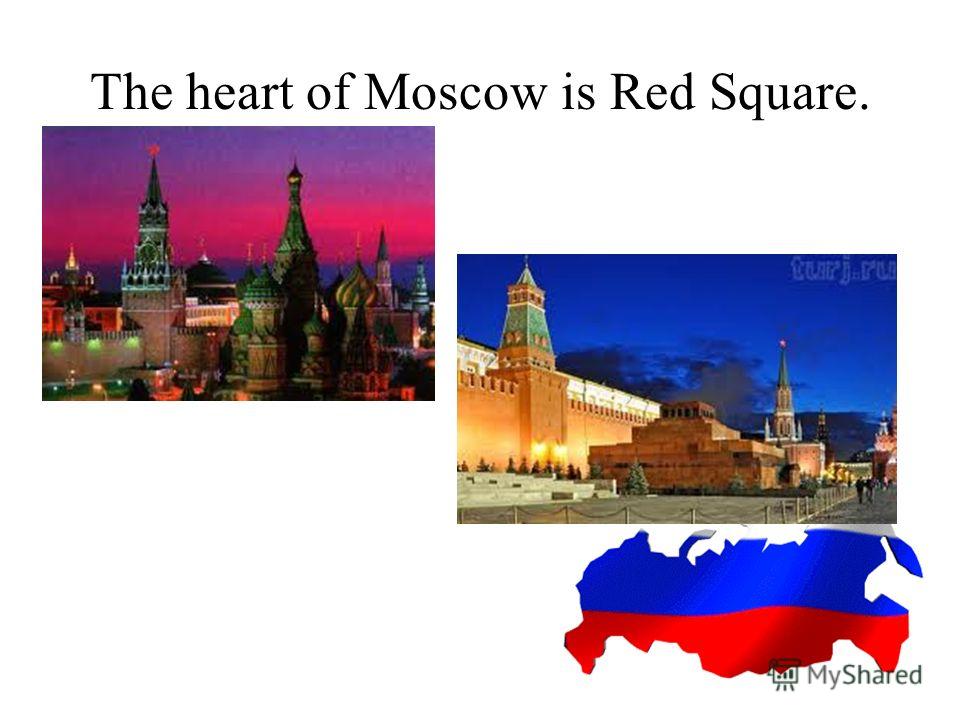
Мавзолей
Почти дочитав пост, я понял, что забыл упомянуть достопримечательность, которая до сих пор популярна среди гостей Москвы. Я, честно говоря, не понимаю, как он может до сих пор существовать, но он и сегодня продолжает стоять на Красной площади, и туда до сих пор можно прийти, чтобы увидеть сохранившееся тело Ленина. Между 1953 и 1961 годами рядом с телом Ленина лежало тело Сталина, но позднее оно было захоронено в Некрополе у Кремлевской стены.
Фото с сайта fotokto.ru
Памятник Минину и Пожарскому
Этот памятник очень важен для россиян, ибо отсылает нас в драматический период истории страны в 17 -й -й век, известный как Смутное время. Этот период отмечен несколькими лжецарями, сменявшими друг друга и утверждавшими, что они настоящий Дмитрий, то есть умерший сын Ивана Грозного.
В то же время около трети населения страны умерло от сильного голода, вызванного холодными неурожайными годами со снегом и морозами в летнее время.
Минин и Пожарский — предводители добровольческого войска, изгнавшие польско-литовские войска из страны в 1612 году. Памятник им был выполнен Иваном Мартосом в 1818 году и является первым большим памятником в Москве.
Копия памятника в Нижнем Новгороде , сделанная Зурабом Церетели в 2005 году. Козьма Минин приехал из Нижнего Новгорода.
Лобное Место
Лобное Место буквально означает «место на крутом берегу реки». Этот пьедестал известен с конца 16 9 г. до н.э.0143-й век — использовался для оглашения царских приказов (вплоть до переноса столицы в Петербург) и во время религиозных церемоний.
До революции 1917 года он оставался важным местом для православной церкви – отсюда архиереи совершали богослужения и благословляли прихожан, а также включался в маршрут крестных ходов во время религиозных праздников.
Собор Василия Блаженного (Покровский собор или Собор Покрова Пресвятой Богородицы на Рву)
И, как говорится, вишенкой на торте в моем посте о Красной площади является собор Василия Блаженного – пожалуй, самый известный символ России за рубежом!
Приехав в Москву, можно услышать распространенную легенду о том, что собор был так прекрасен, что царь Иван Грозный ослепил его зодчих Постника и Барму, чтобы они больше ничего подобного не построили.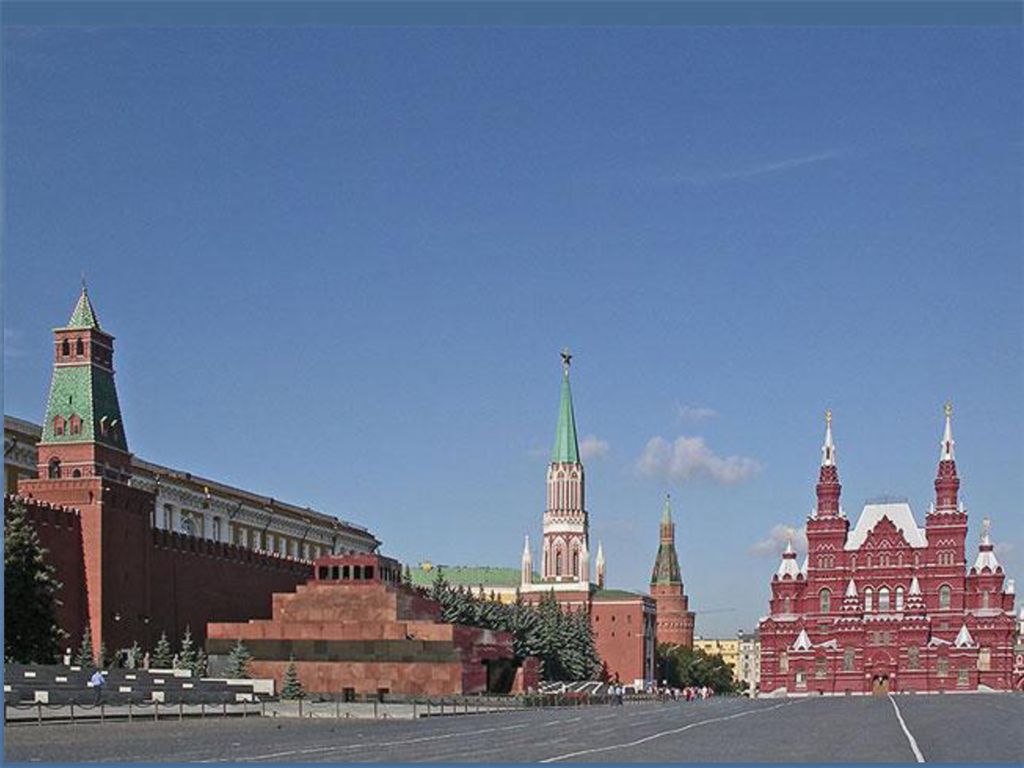 Однако их имена встречаются в письменных источниках более позднего времени, где упоминается, что они проектировали другие храмы после завершения строительства храма Василия Блаженного.
Однако их имена встречаются в письменных источниках более позднего времени, где упоминается, что они проектировали другие храмы после завершения строительства храма Василия Блаженного.
Собор построен за 6 лет в честь взятия Казани. Он был открыт в 1561 году и состоял из 9 «павильонных церквей» или «шатеров» по-русски, все они были холодными, то есть неотапливаемыми и служили только летом.
В 1588 году к собору была пристроена десятая церковь, церковь Василия Блаженного, и, поскольку она была отапливаемой, большинство служб в ней совершались круглый год. Его название вскоре стало использоваться как неофициальное название собора. И так продолжается до сих пор! Официальное название собора — Собор Покрова Пресвятой Богородицы на Рву или Покровский собор по-русски, но большинство людей никогда не узнают его под ним, они знают его как Василия Блаженного!
Храм имеет 11 куполов. 10 из них венчают одни и те же церкви, а последний находится на колокольне.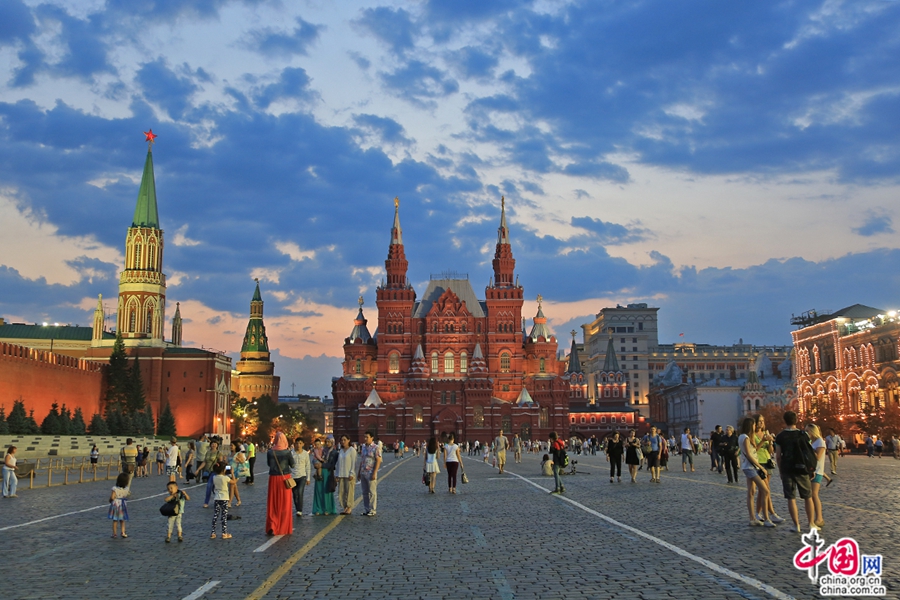

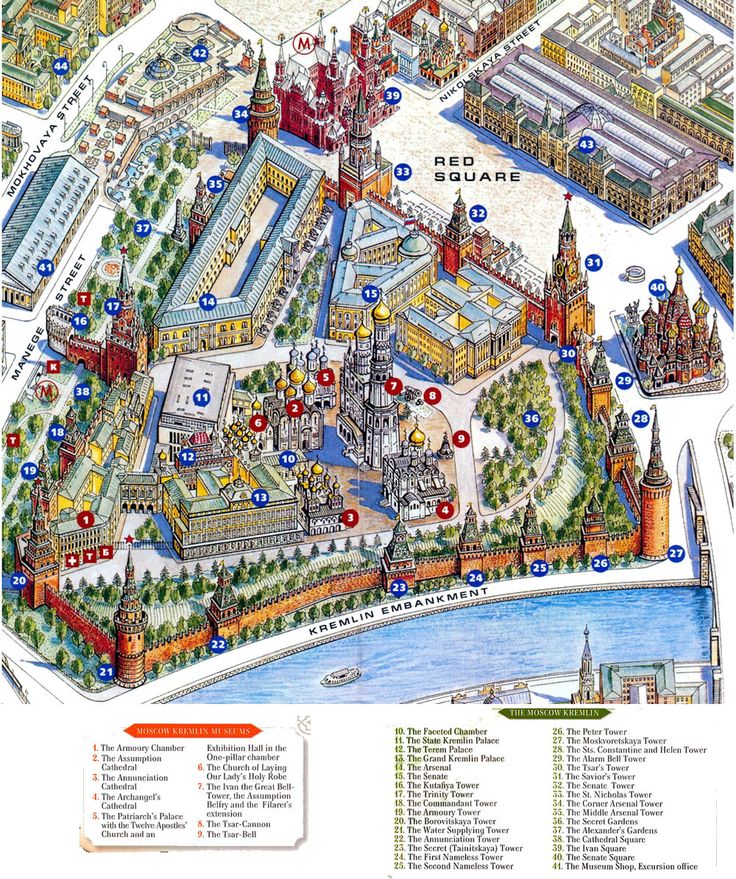
 Many luxury stores are housed in this architectural masterpiece
Many luxury stores are housed in this architectural masterpiece Links Red Squareand Lubyanka Square.
Links Red Squareand Lubyanka Square.